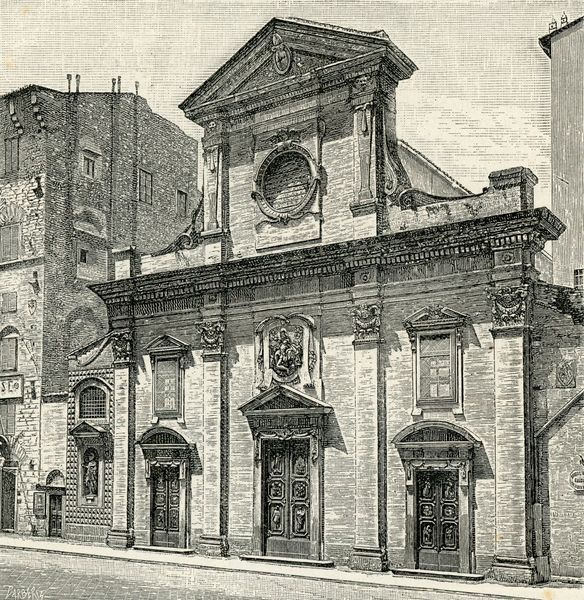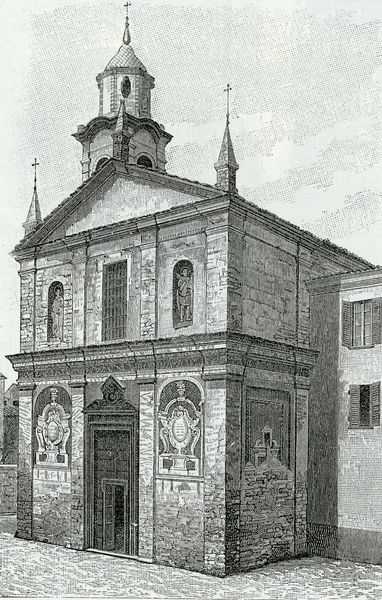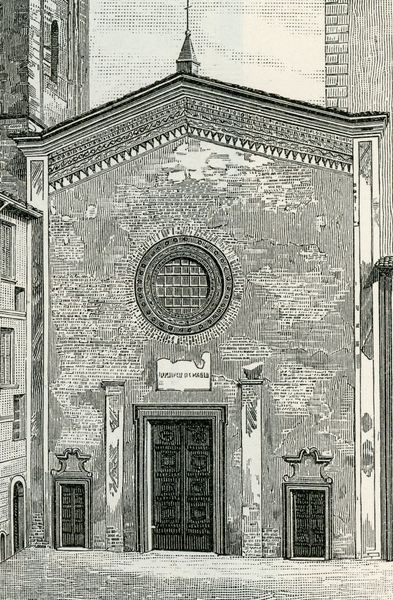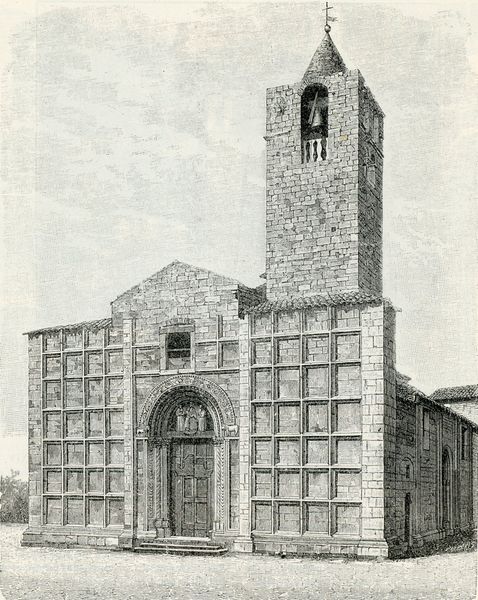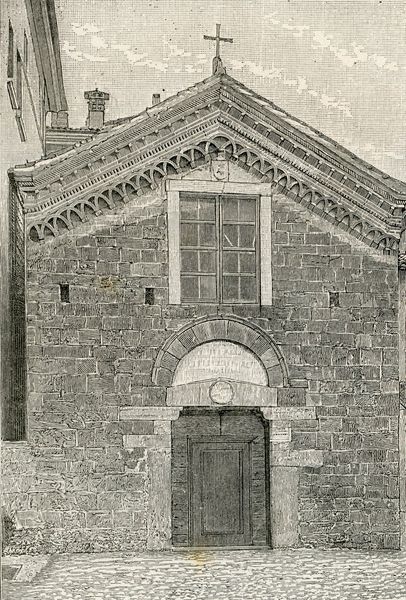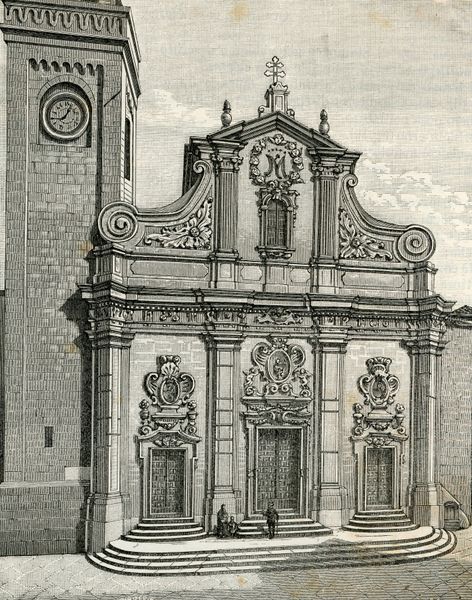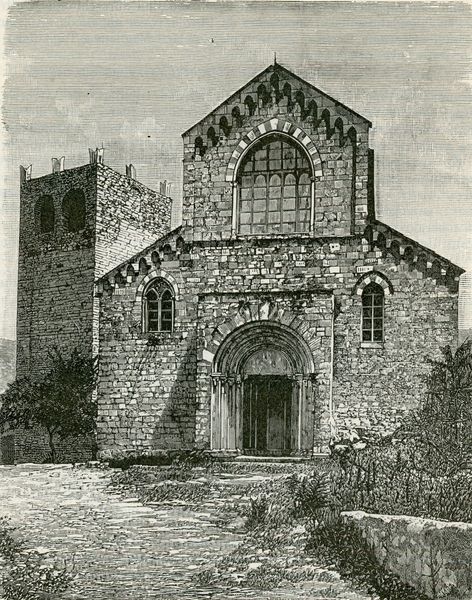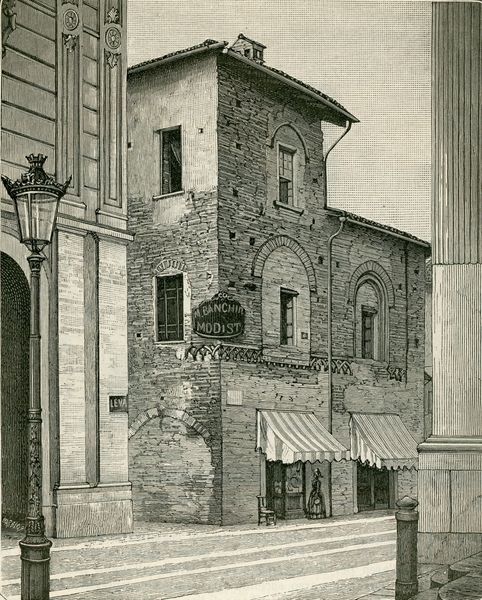
drawing, print, engraving, architecture
#
drawing
# print
#
historic architecture
#
romanesque
#
italian-renaissance
#
engraving
#
architecture
#
historical building
Copyright: Public domain
Curator: Before us is an engraving from 1892 by Giuseppe Barberis entitled "Cattedrale Di San Michele," showing the facade of the church. Editor: There's a solemn quality, an aged monumentality. The detail captured in this rendering of the stone work and carvings is stunning. You can almost feel the weight of history pressing down on you. Curator: Indeed. Consider that Barberis executed this engraving at a moment of immense social and political upheaval in Europe. What continuities, or breaks, might a depiction of Romanesque and Renaissance architecture signify in the face of rapid modernization and shifting power structures? Editor: It is an invocation of tradition, of permanence. The carefully rendered architectural details become almost like symbolic armor. Look at the Romanesque blind arcades and the Renaissance doorway decorations; they project power but also speak to spiritual continuity. This church, even just its depiction here, acts as a grounding force, perhaps, a place of stability during a turbulent era. Curator: I agree that it offers a powerful vision of tradition. However, one might argue that this visual consolidation, these various architectural styles blending, reinforces a hegemonic narrative, flattening distinct historical moments to promote a specific ideal of Italian identity during the Risorgimento. The image promotes power in an idealized fashion, silencing marginal perspectives. Editor: An interesting and valid point. Although, even within the image's grand statement, individual details continue to communicate. Those sculpted figures flanking the semi-circular tympanum above the central portal carry weight. Perhaps these represent not power, but virtue or specific beliefs meant to subtly instruct. Curator: Your reading opens a valuable avenue for exploring the function of public art and architecture. Even within this static representation, such spaces are rarely ideologically neutral; instead they are battlegrounds in the negotiation of power and meaning. Editor: Thank you. It reminds us that images of buildings are, after all, charged vessels carrying layered meaning. Curator: Yes, the layers expose that the "Cattedrale Di San Michele," although seemingly set in stone, contains echoes and reflections of ever-changing forces.
Comments
No comments
Be the first to comment and join the conversation on the ultimate creative platform.

